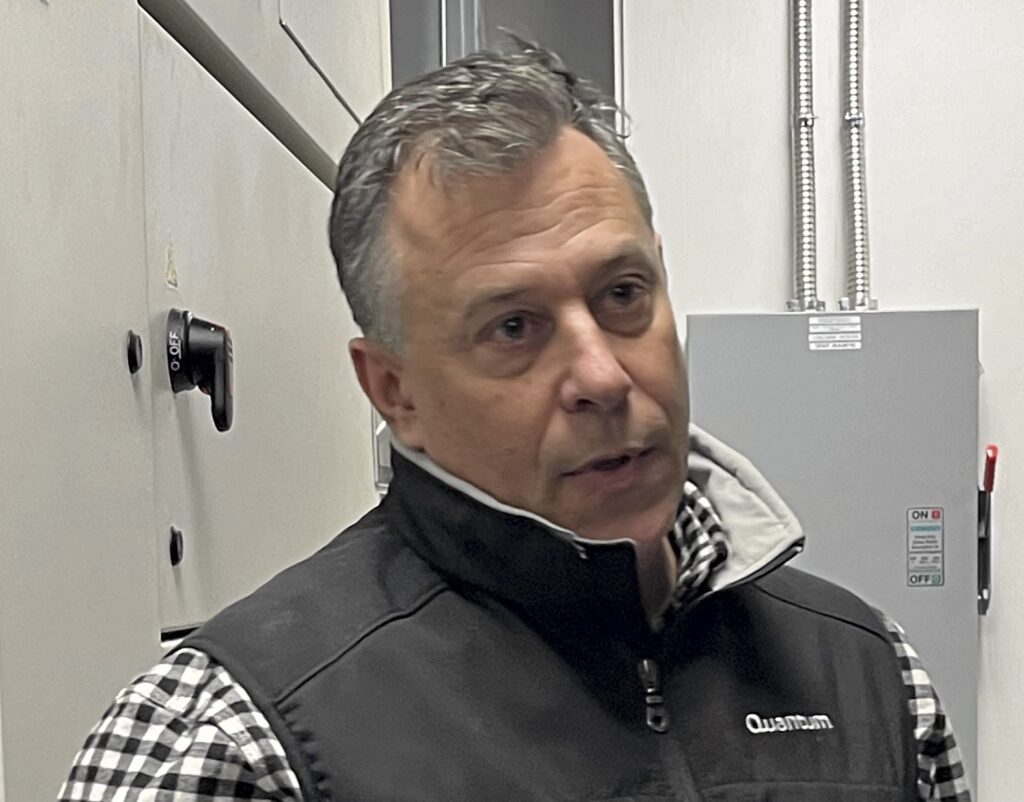Myriad, the new all-flash storage software from Quantum, will support Nvidia’s GPUDirect protocol to feed data faster to GPU servers.
Myriad was initially devised by technical director Ben Jarvis, who has filed several Myriad-related patents and came up with the core transactional key-value metadata database idea. He’s a long-term Quantum staffer, saying that back in 2006 he “joined ADIC and found out that Quantum was buying it the next day.”

Quantum bought ADIC for its backup target deduplication technology, which is used in the present day DXi backup target appliances.
Jarvis became involved with the StorNext hierarchical file manager, which initially was based on disk storage with tiering off to tape. As soon as the first all-flash arrays started appearing, he thought that Quantum and StorNext would need to support SSDs and that a disk-oriented operating system was inappropriate for this, however much it could be modified. A flash storage OS needed to be written from first principles so that it would be fast enough for NVMe drives and could scale up and out sufficiently.
Myriad was announced last year. Nick Elvester, Quantum’s VP for Product Operations, told an IT Press Tour in Denver that there has been high interest in Myriad, and CEO Jamie Lerner added: “Myriad has had million-dollar rollouts.” John Leonardini, a principal storage engineer for customer Eikon Therapeutics, is evaluating Myriad. “It’s one of the very fastest things on my floor. Myriad is the first Quantum product we cut a PO for,” he said.
Eikon currently uses Qumulo scale-out storage and indicated that Myriad outperformed it, with a five-node setup providing more data IO than racks of Qumulo gear. He also said that Myriad features were more usable than aspects of Qumulo’s data services such as snapshots. Leonardini likes Myriad’s automated load balancing and new node adoption as well. “We can click a button, come back in a day, and everything is rebalanced. That’s a win in my book.”

Elvester said the main Myriad customer interest lies in using its high performance for AI applications. It currently supports NFS v3/4 and SMB, and has a client providing parallel access. Myriad services include encryption, replication, distributed and dynamic erasure coding, data cataloging, and analytics. S3 access, a POSIX client, and GPUDirect support are roadmap items.
Jarvis said Myriad has a client access system that is dedicated like Lustre, and doesn’t use parallel NFS. One vendor does use pNFS, although a formal standard has not been adopted generally by the industry.
He said the suppliers that defined pNFS did so in a way that suited them and not others. For these others, adopting pNFS means bending their NFS software uncomfortably. “By using our client we avoid all that.”
Jarvis’s enthusiasm for writing from scratch extended to Myriad’s internal ROCE RDMA fabric. “It’s not NVMe-OF but our own protocol similar to NVMe-OF.”
Myriad is containerized and a cloud-resident version is being produced but not yet available.
Asked about GPUDirect, Jarvis said: “Storage for AI does not begin and end with GPUDirect. We’re going to check the box. We’re going to do innovation. Not all GPUDirect implementations are good.”
Lerner said: ”GPUDirect and SuperPOD support in Myriad is coming out imminently.”
He was asked about Quantum’s tape business and said tape is declining faster than before. New architectures don’t use tape. Tape cartridge capacities are larger than before and tapes are filled up rather than being part-filled and shipped off to Iron Mountain. So fewer cartridges are needed and they tend to stay in the libraries.
We have heard from sources that the hyperscalers over-bought tape a year or so ago and are now continuing to digest the purchases, slowing down their buy rate.
Looking at Quantum overall, Lerner said: “Quantum is inventing again. We’re generating patents again. Our innovation engine is running again. In the future I imagine everything we have is flash and then there will be tape. We have to let the legacy go.”








